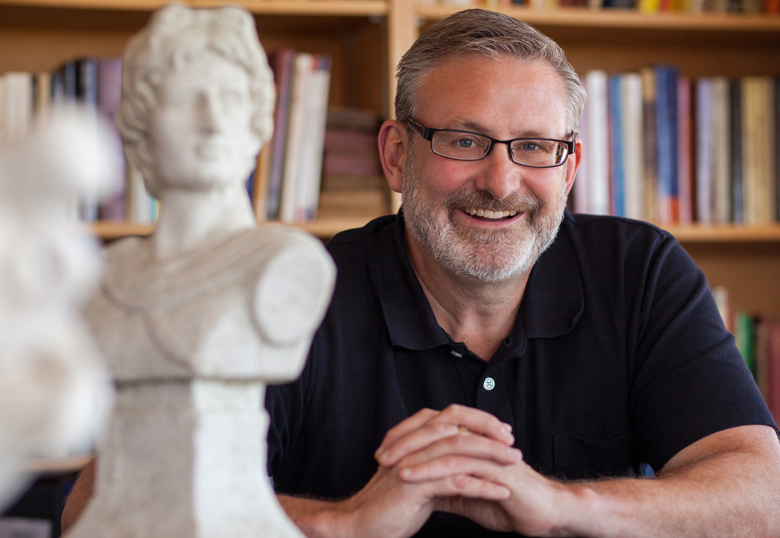The University of Lethbridge is pleased to announce the reappointment of Dr. Craig Cooper as Dean of the Faculty of Arts & Science for a five-year term effective July 1, 2018.
Cooper has served as Dean since being originally appointed in July 2013 and distinguished himself as a key leader in the University community.

“We’re very happy to have Dr. Cooper continue in his role as Dean, one that he has made his own over the last four years through progressive and innovative actions and ideas,” says Dr. Andy Hakin, Provost and Vice-President (Academic). “The Faculty of Arts & Science is our largest and requires diligent leadership skills. During his tenure, Dr. Cooper has advanced the Faculty both within academia and beyond, connecting our students and faculty members to the broader southern Alberta community. This will be especially important moving forward with the completion of the Destination Project, of which Dr. Cooper has played a key leadership role in its development to date.”
Cooper came to the U of L from Nipissing University in North Bay, Ont. where he was a professor of classical studies and served as the Dean of Arts and Sciences. He spent the majority of his academic teaching career at the University of Winnipeg, beginning as a sessional instructor in 1993 and eventually serving as the Associate Dean of Arts.
Cooper earned his bachelor's degree at the University of Alberta before completing his master's and PhD designations at the University of British Columbia.
A member of the International Society for the History of Rhetoric and the Society for Classical Studies, among others, Cooper is an ancient Greek historian who continues to study Athenian law, Athenian orators and Greek rhetoric. He recently presented as part of the Faculty of Arts & Science’s immensely popular Public Professor Series lectures.
“As the Destination Project nears completion and we begin to utilize all that this amazing building will encompass, Dr. Cooper will play an essential role in shaping the direction of our programming both internally and externally, helping to realize the building’s immense capacity to advance scientific study,” adds Hakin.
